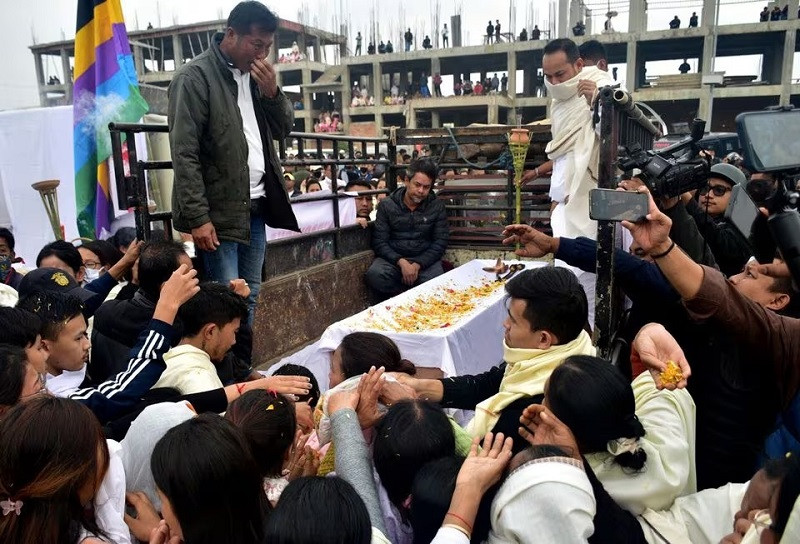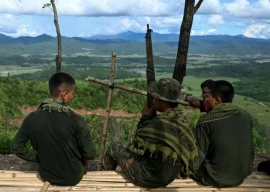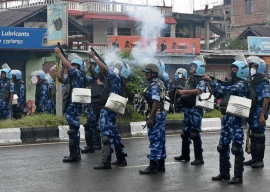
More than 80 people killed in ethnic clashes in India's northeastern Manipur state over the past seven months were laid to rest on Wednesday, officials said, as sporadic violence continued in the region.
At least 180 people have died since fierce fighting broke out between members of the majority Meitei and minority Kuki communities in May, following a court order suggesting privileges granted to Kukis also be extended to Meiteis.
Earlier efforts to carry out the last rites of the deceased were marred by conflicts between the communities, which prevented the bodies from being handed over to relatives, as well as legal disputes.
More than 60 victims were buried last week in a similar ceremony, following directions from the Supreme Court to give victims a "dignified burial".
Those buried on Wednesday belonged to the Kuki and Zomi tribes, according to officials from the Indigenous Tribal Leaders' Forum (ITLF), an apex tribal body.
Read also: At least 13 killed in gunfight in India's Manipur
They were laid to rest in Churachandpur district in the presence of hundreds of mourners who chanted slogans declaring them martyrs.
Local gospel choirs sang funeral songs before the burial while friends and relatives placed floral wreaths on the coffins of the deceased before a special prayer was said as they were lowered into the graves, S. Vunminthang, a church leader present, told Reuters by telephone.
Churachandpur is among the areas in the state that continue to remain tense. Prohibitory orders have been imposed in the district for the next two months following clashes between two groups earlier this week.
Manipur, bordering Myanmar, is among the smallest states in India with a population of 3.2 million people.
Of its residents, 16% are Kukis, who live in the hills and receive economic benefits and quotas for government jobs and education, while 53% are Meiteis, who control the more prosperous lowlands.



1725967717-0/Untitled-design-(3)1725967717-0-165x106.webp)

1730567063-0/Express-Tribune-Web-(20)1730567063-0-270x192.webp)



1730561201-0/Express-Tribune-Web-(18)1730561201-0-270x192.webp)
1725355010-0/BeFunky_-(15)1725355010-0-270x192.webp)










COMMENTS
Comments are moderated and generally will be posted if they are on-topic and not abusive.
For more information, please see our Comments FAQ